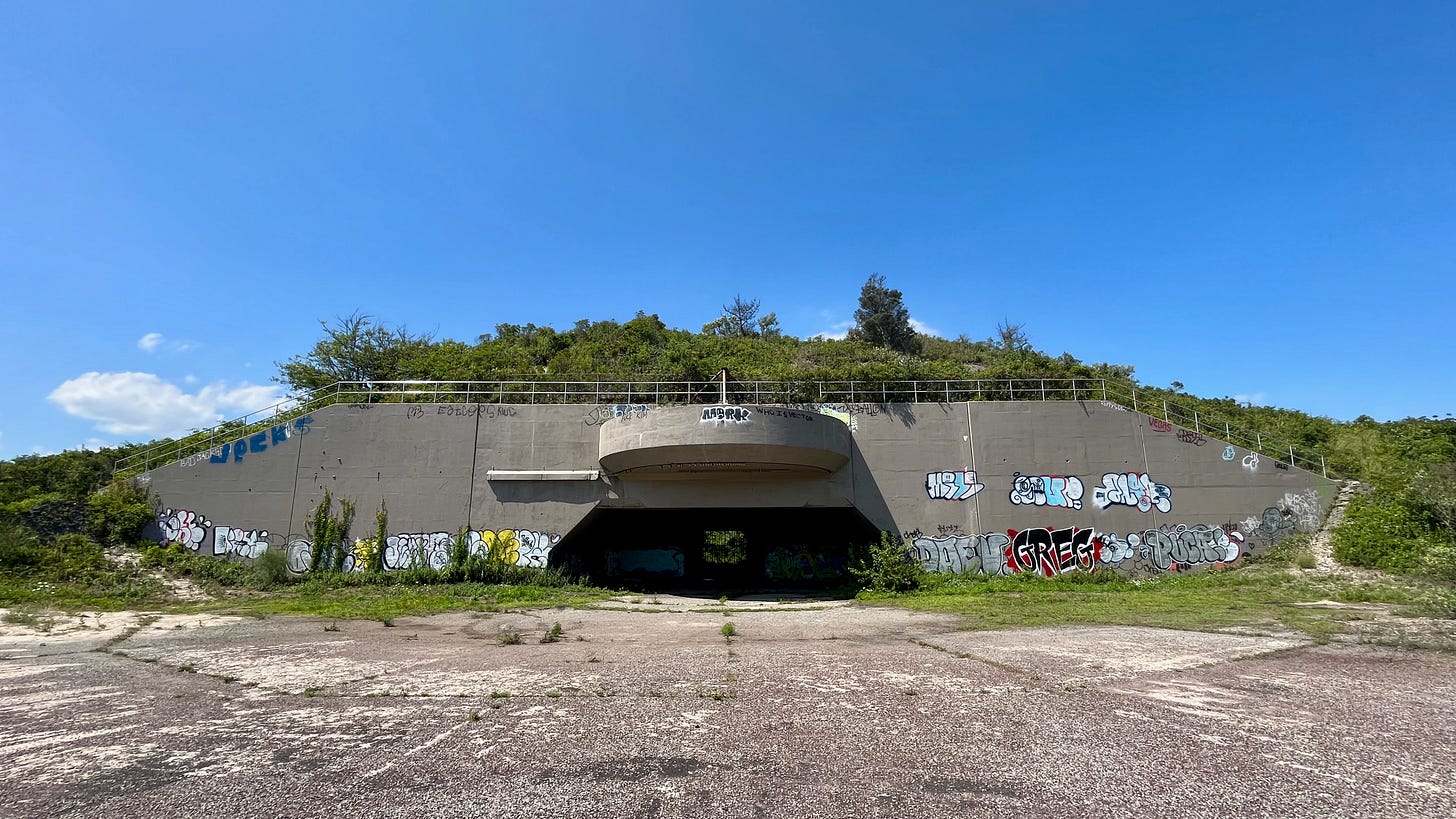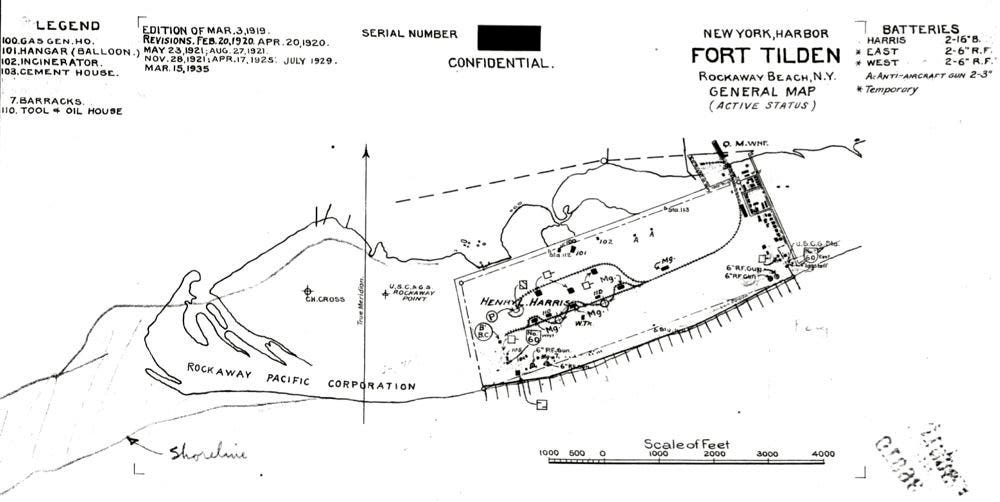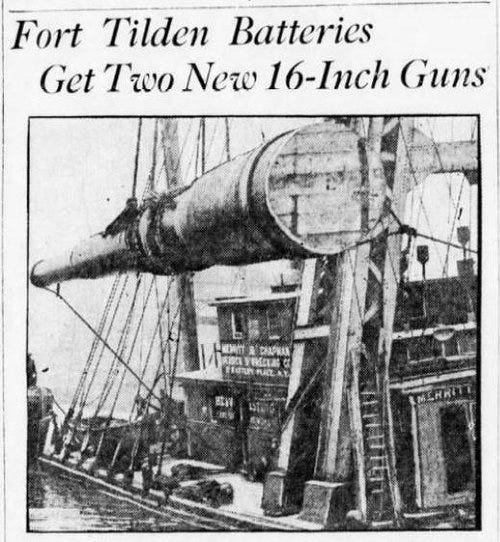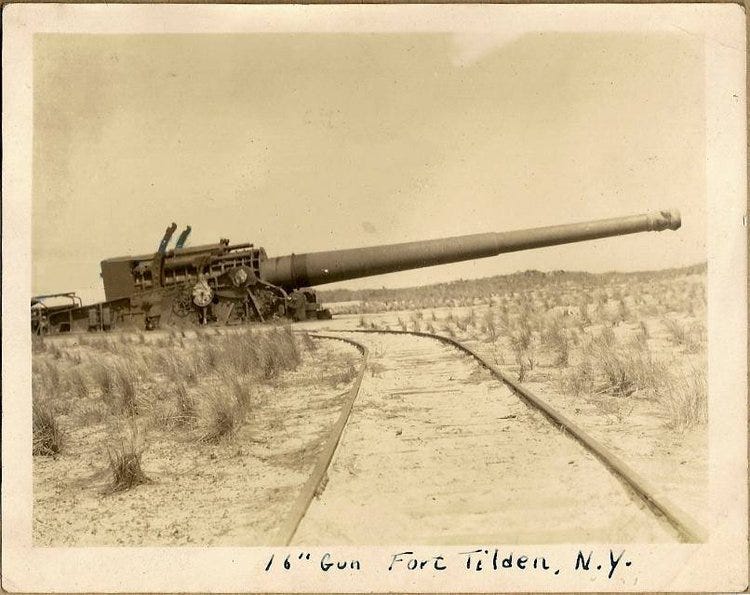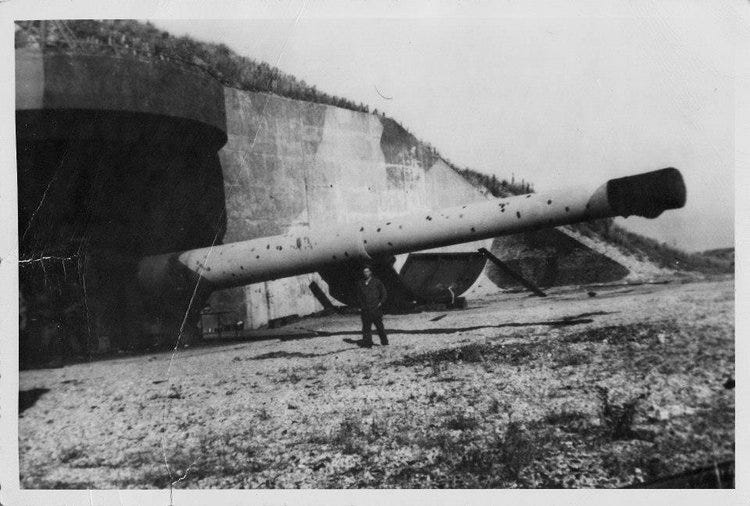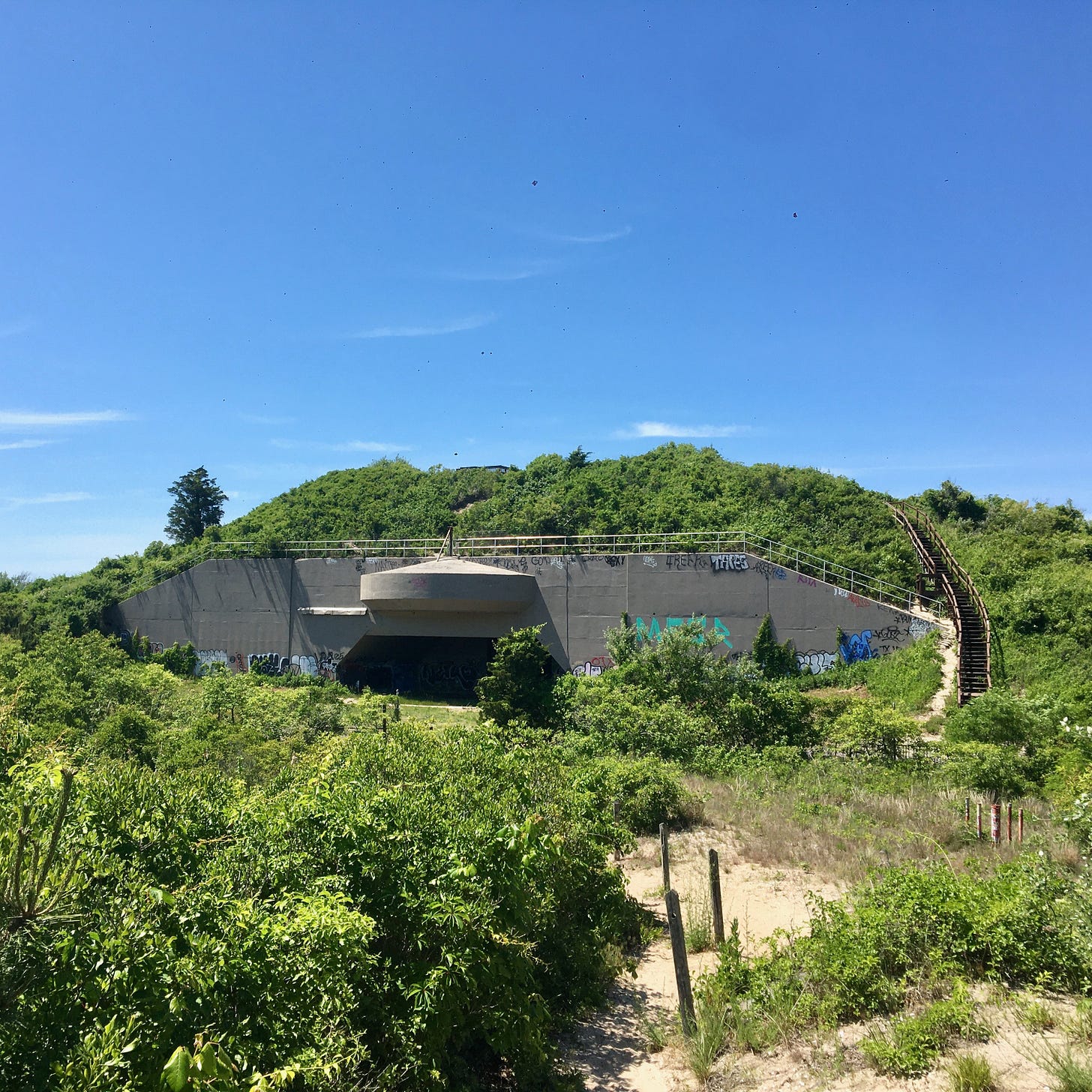Hidden from the beach on the Rockaway Peninsula in Queens, NY are two towering artillery batteries, their 16-inch cannons long since removed. Visitors who keep to the beach without exploring the area’s wooded pathways may be completely unaware that the remnants of New York City’s military defenses stand nearby.
Fort Tilden, once a functioning fort with over 57 years of protecting New York City is today part of Gateway National Recreation Area. The area is a popular beach and fishing destination for many New Yorkers as well as a marine habitat preserve.
Fort Tilden’s history began when clashes with the British prior to the War of 1812 prompted President Thomas Jefferson to fortify America's coasts. Due to New York City’s importance as a shipping and commerce port, harbor fortifications were built on Manhattan Island, Governor's Island, Ellis Island, Liberty Island, and Staten Island in 1807. These forts, part of the Second System defenses, were constructed of earth and wood and their smoothbore cannons could fire up to 1 mile, keeping enemy battleships from striking distance. A blockhouse was built on Rockaway Peninsula, the first of many military installations at the site of the future Fort Tilden.
Between 1817 and 1867 the forts were updated with cannons which had a range of 3 miles. This allowed construction of Fort Wadsworth on Staten Island and Fort Hancock in Sandy Hook, NJ, which guarded the southern entrance of New York harbor (also part of Gateway National Recreation Area).
When the United States entered World War I in 1917 more fortifications were added on the Rockaway Peninsula to deter and protect New York harbor from enemy battleship attacks. Camp Rockaway Beach and the Naval Air Station (NAS) Rockaway was constructed at the location of today's Jacob Riis Park. Camp Rockaway Beach was renamed to Fort Tilden after Samuel J. Tilden, former governor of New York and 1876 presidential candidate. The East and West Batteries were added to Fort Tilden’s shoreline, each with two 6-inch guns.
In 1924, Fort Tilden's Battery Harris was built which added two 16-inch M1919 cannons operated by the Army’s Coast Artillery Corps. The cannons were the largest ever used in United States seacoast defenses and had a range of up to 26 miles. The shoreline defenses, East Battery and West Battery, were renamed to Battery Fergusson and Battery Kessler.
World War II brought new threats to New York harbor and Fort Tilden underwent more changes. The fort’s detachment increased to 1,000 men and barracks were constructed. In 1943, Battery Harris was casemated with concrete and disguised with sand to protect against aerial attacks. The concrete structure also included a railway system which moved ammunition from adjacent magazine buildings and loaded the cannon’s one-ton artillery shells.
Following the end of World War II, Fort Tilden's coastal defenses were no longer needed. In 1946 parts of the facility were converted to apartments for Army veterans and their families. The 16-inch cannons were sold for scrap in 1948 as the fort’s defenses were considered obsolete.
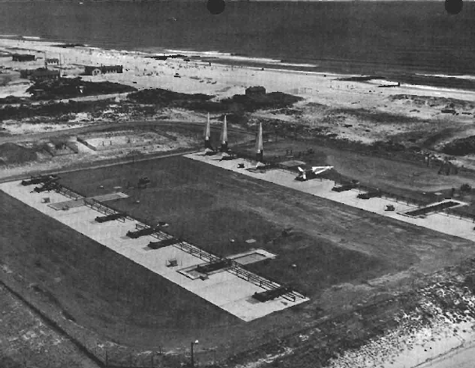
When New York City was under renewed threat during the Cold War, Fort Tilden was once again put into use. In 1951, the 69th Anti-Aircraft Artillery Battalion was stationed to man anti-aircraft batteries since sea attacks were no longer a danger. These batteries soon became obsolete and surface-to-air missiles were emplaced to defend against Soviet jet bombers in 1954.
Fort Tilden’s Nike Missile site (NY-49) was one of 19 sites within the New York City area which could intercept enemy jets out at sea. Though the Nike Hercules system was designed to carry a nuclear warhead the army did not confirm whether or not Fort Tilden's missiles carried nuclear material (more on this here). Due to the SALT treaty with the Soviet Union all Nike sites were decommissioned and in 1974 the army transferred Fort Tilden to the National Park Service.
Today visitors can see Batteries Kessler and Ferguson from the beach and many military support buildings also remain near the recreation area’s baseball fields and parking lots. At the end of a fenced-off derelict road is the Nike missile site which is closed to the public but can be found easily with the help of Google Maps. Follow the wooded paths through the old fort’s interior to climb the observation deck atop the giant concrete Battery Harris East which now stands as a reminder of Fort Tilden's role in protecting New York City.
Until next time,
Keith
Sources
https://www.nps.gov/gate/learn/historyculture/samuel-tilden-biography.htm
https://www.nps.gov/gate/learn/historyculture/2ndsystemforts.htm
https://www.nps.gov/gate/learn/historyculture/newyorkharbordefenses.htm
https://www.nps.gov/gate/learn/historyculture/forttilden1917-45.htm
https://www.nps.gov/gate/learn/historyculture/coldwartilden.htm
https://www.nps.gov/gate/learn/historyculture/nike-missile.htm
https://www.nps.gov/gate/learn/historyculture/upload/Willis-lt-colonel.pdf
https://www.wcny.org/education/war-of-1812/the-fortification-of-new-york-harbor/





